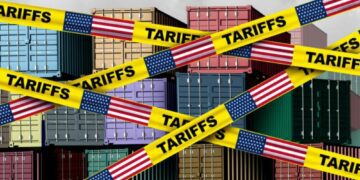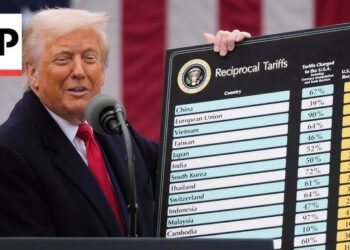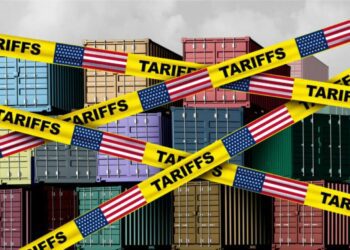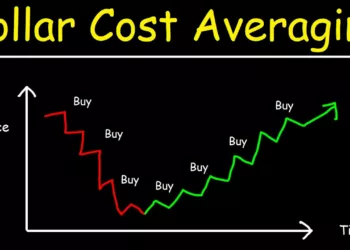Trading the foreign exchange (Forex) market can be an exciting endeavor, but also comes with substantial risk if not managed properly. As with any financial market, having an effective risk management strategy is key to long-term trading success and consistent profits. In this post, we will explore some of the most important aspects of Forex risk management.
Why Forex Risk Management Matters
Before jumping into specific techniques, it’s important to understand why actively managing your risk is so critical in Forex trading. Here are some of the main reasons:
- Forex is highly leveraged – Using leverage allows you to put up just a small portion of the total trade value, but that amplifies both profits and losses. By using 50:1 leverage, a 2% market move against your position would wipe out 100% of your capital. Not managing trades appropriately under leverage can lead to margin calls and blown accounts.
- Volatility is high – Currencies tend to have significant price swings from day to day and even minute to minute, meaning you can see large moves against your position quickly. Pairs like GBP/JPY have average daily ranges of over 100 pips, while other pairs average 10-50 pips daily. With leveraged positions, such normal volatility can equate to outsized losses if unchecked.
- Correlations shift – Unlike stocks which tend to trade more independently, currency pairs have shifting correlations. If you are trading multiple pairs, a change in correlation can lead to clustered losses and heightened drawdowns. Keeping correlation dynamics in check is key.
- Gaps occur – Gapping refers to an asset opening significantly above or below the prior day’s close. In Forex markets, gaps primarily occur around major news events such as employment reports or rate decisions. Risk management around these events is crucial.
- Emotions come into play – Fear and greed often influence traders to abandon their risk management plans, hurting long term profitability. Having risk rules in place protects you when emotions take over decision making.
In other words, Forex trading provides ample opportunities to succeed handsomely, but also to fail spectacularly if not careful. That’s why every trader must make risk mitigation central to their overall strategy.
Techniques for Managing Forex Risks
Now let’s explore some of the top techniques used by successful traders to minimize their risk exposure:
Determine Appropriate Position Sizing
- Position sizing refers to how large of a position you take on a given trade based on your account size and risk tolerance.
- Generally, it’s advisable to risk no more than 1-2% of your account on a single trade. For example, if you have a $10,000 account, risking 2% means you would enter trades with a maximum position size of $200. If using 50:1 leverage, that would mean a 0.04 standard lot position size.
- There are more advanced position sizing models as well, such as the Fixed Fractional method. This uses trade risk factors to determine the exact optimal fraction of an account to risk.
- Always base position size on account size – Even if your analysis suggests a larger position makes sense, sizing appropriately for your capital ensures you stay in the game long term.
“Proper position sizing is key. To stay profitable through various market conditions, never risk more than 2% of capital on a single trade.” – Bruce Kovner, Billionaire Trader
Utilize Stop Loss Orders
- A stop loss is a type of limit order that automatically closes out your position if the market moves against you by a pre-defined amount.
- Stop losses allow you to pre-define the maximum loss you are willing to take on any given trade. This contains downside risk if the market rapidly turns.
- Traders utilize different stop loss placement strategies:
- Static Stops – Fixed stop loss level that does not change
- Trailing Stops – Stop level adjusts as favorable price move allows more profit
- Average True Range – Sets stop level based on recent volatility ranges
- Chart Patterns – Places stops beyond key support/resistance levels
- Determining this criteria before entering trades will make it less tempting to move stops during volatile swings.
Manage Risk/Reward Ratios
- Another important metric is the risk/reward ratio on your trades. This refers to the potential profit of a trade compared to the potential loss.
- Generally a 2:1 risk/reward ratio is recommended at a minimum, meaning your projected profit target is at least twice as large as your risk on the trade. This positively skews the math in your favor over a series of trades.
- For example, if your stop loss dictates a $100 risk on a trade, you would want to see a projected profit target of at least $200. Risking $100 to make $50 is more speculative and long run negative expectancy.
- If your analysis suggests less favorable ratios, it’s often best to pass on the trade opportunity to protect your capital for higher probability setups. You can compensate by trading more frequency with ideal risk/reward trades rather than forcing marginal trades.
Keep Emotions in Check
Emotional trading is often the downfall even of more experienced investors. When you feel fearful or euphoric about a market move, it tends to negatively influence decision making. Some ways to reduce emotional influences include:
- Trade with a plan – Having predetermined entry/exit criteria reduces influence of emotions in the moment. Execute the plan, not what greed/fear dictates.
- Limit position size – Even if a trading idea seems brilliant, over-extending position size is often a sign of emotion taking over logic.
- Have outside interests – Focusing energy on relationships, health, and happiness outside trading keeps emotions balanced. Don’t obsess.
“No emotion, no ego, no panic, no euphoria. Keep calm and carry on.” – Anonymous Forex Trader
Implementing a Forex Risk Management Plan
Having guidelines for risk management is useful, but executing a concrete trading plan is vital for long-term success. Here are some tips:
- Keep a proper trading journal tracking all market analysis, trades, wins/losses, and emotional states. Review periodically to improve.
- Conduct “post-mortem” analysis on losing trades to determine if poor risk management was a factor. Identify fixes.
- Backtest trading strategies over various historical periods to gauge “worst case” drawdowns and volatility dynamics.
- Consider working with a reputable prop firm to leverage proper risk software, mentors, and structure while you hone expertise.
The Bottom Line
Without effective Forex risk management employing appropriate position sizing, stop losses, risk/reward analysis, and emotional control, even the most skilled traders end up experiencing account blow ups when inevitable strings of losses occur. Protect your hard earned trading capital at all costs by making risk mitigation the centerpiece of your Forex trading strategy. This will allow you to weather all types of market conditions and maintain lasting profits in the world’s largest financial market.
For more content, check out The Alluring Yet Treacherous Landscape of Forex Trading.
This article is for informational purposes only and not investment advice. Please consult an investment professional before making significant decisions related to any investment product or security.

















































